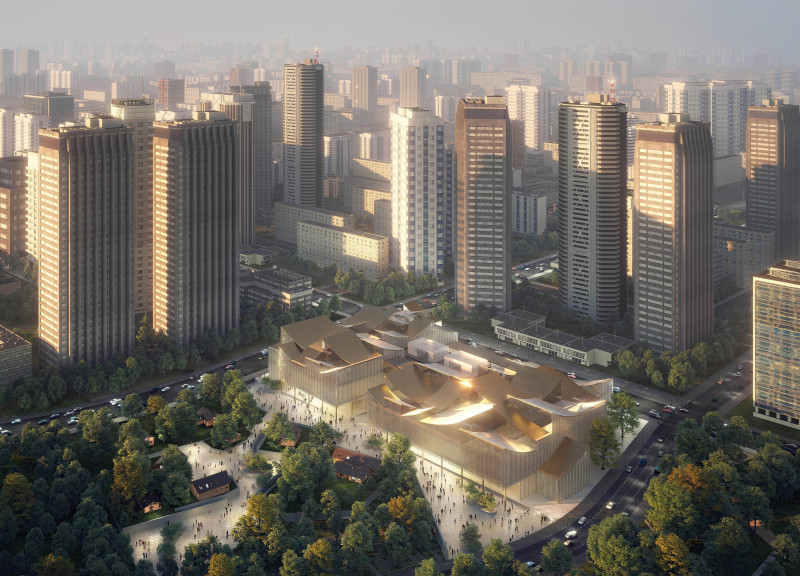5 key facts about this project
The project is characterized by its seamless integration with the outdoor landscape, promoting an authentic connection between the interior spaces and the environment. The building’s facade employs a combination of materials, including glass, concrete, and natural wood, which work harmoniously to create a sense of warmth and inviting transparency. The extensive use of glass not only allows for abundant natural light but also fosters visual continuity with the surroundings, blurring the lines between indoor and outdoor spaces.
Inside, the layout is carefully designed to accommodate a variety of activities, promoting flexibility and adaptability for its occupants. Open spaces are interspersed with strategically placed partitions that offer privacy without sacrificing the overall flow of the design. Common areas are positioned to encourage social interaction, serving as gathering points where residents can connect, collaborate, and engage in communal activities. This thoughtful arrangement reflects the design’s intention to promote a sense of community while also providing individual spaces for reflection and solitude.
One of the unique aspects of this project is its emphasis on sustainability and environmental consciousness. The design incorporates energy-efficient systems and materials that not only reduce the building's carbon footprint but also enhance the overall quality of life for its inhabitants. Green roofs and walls, combined with rainwater harvesting systems, serve as practical sustainable features while also contributing to the building's aesthetic appeal. These elements demonstrate a forward-thinking approach to architectural design, indicating a commitment to ecological stewardship.
The use of innovative design techniques is showcased in the architectural sections and plans that outline the thoughtful consideration given to light, ventilation, and acoustics. For instance, strategically placed windows and courtyards enhance cross-ventilation, reducing reliance on mechanical cooling systems and contributing to energy savings. The attention to detail in the architectural designs is evident, with every feature carefully considered to optimize both functionality and comfort.
This project exemplifies an architectural approach that values not only form and function but also the well-being of its users and the surrounding environment. The blending of modern design elements with practical, user-centric solutions sets a benchmark for future developments in urban architecture. By encouraging interaction with nature and fostering social connections through its design, the project stands as an example of how architecture can thoughtfully respond to the complexities of urban living.
For those seeking to delve deeper into the design nuances and operational efficiencies of this project, an exploration of the architectural plans, sections, and specific design ideas will provide a clearer understanding of how the design interacts with its environment and meets the demands of its users. Engaging with these elements can enrich one’s appreciation for the intricacies of the architectural process and the impact it has on everyday life.























